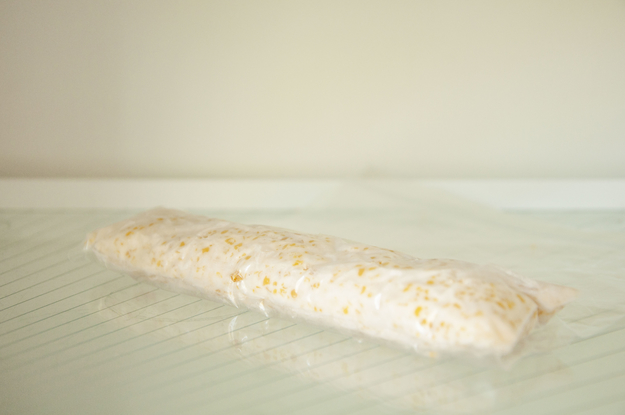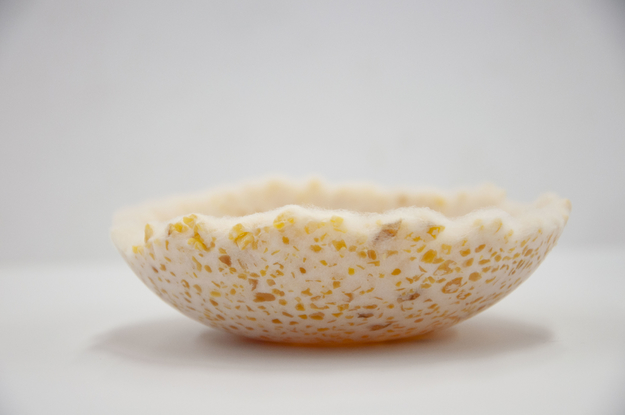I am Jiwei from Sichuan, China. This is my third week working in the Clean Lab. I did a lot of learning about tempeh in last two weeks with the Book of Tempeh, because I hope I could make tempeh with a knowledge in mind. What I learned about tempeh making process is as follows:
Substrate: Tempeh is mostly originally made with soy beans and a fungus called Rhyzopus Orizae in a fermentation process. We use lupins as a substitute for soy beans.
Oxygen: Rhyzopus Orizae is an aerobic fungus, which means it needs oxygen for its metabolism. Too much oxygen, though, can cause over maturity and sporulations. So it's important to have a very slow flow of air into the incubating lupins.
Temperature: Rhyzopus Orizae grows best in the range of 30°C to 37°C. However the book recommends growing at 31°C since it gives better flavour and longer storage time, although with longer incubation time.
Time: Incubation time depends on the temperature. At 31°C, the incubation time should be from 22-26 hours. I used 24 hours as a mean.
Moisture: The substrate should be almost dried before incubation.
My first step in this research is to optimise fermentation conditions for the tempeh bowls, in order to get a shorter fermentation time thus a faster progress. In the previous research, fermentation took place at 26-27°C, and took around 42 hours. Actually, the time could be shorter if the temperature is closer to the natural conditions in Indonesia, where tempeh making technique comes from. In the Book of Tempeh, it says: the temperature should be 30-31°C, at which the fermentation time should be 22-26 hours. Therefore, I changed the incubation conditions to 30-31°C, incubation time to 24 hours. In order to timely observe the growth of the fungus and get information about more exact incubation time, I made an observation package of the mix ingredients, by using a transparent bag. In turned out that after around 22 hours, the mixture already became an intense cake, with no specific smell.However, I still let them incubate till 24 hours to see if 2 more hours make any changes.
Besides, I tested a change to the air isolation technique. Previously, researchers used tapes to isolate the abundance of air that influence tempeh growth along the mould edge. However, I found it a waste of materials and non-environmentally friendly because the tapes used could not be re-used any more. I tried with storage bags with holes on it outside the moulds as an alternative for air isolation. This change probably caused more air flow in the mould.
Actually, the tempeh using the bag for air isolation has more fluffy edges than the taped one and seems thicker.It might be that the more richness of air make the fungi grow better because they are an aerobic species. However, the new technique didn't influence the growing time and tempeh quality obviously.
I added Surinam chilli peppers, honey and coconut milk in three batches of lupins, to see if the adding ingredients give tempeh ware spicy taste, sweetness and coco aroma, and if they influence the fungus growth. For each batch I made two identical groups. Besides, I made one constant group with only lupin as substrate for the fungus.
The results show that chilli peppers, honey and coco milk all made the tempeh have an ammonia aroma.However, the constant group tempeh doesn't have that at all. Therefore I think, maybe it's because the extra ingredients brings more water into the substrate and potentially other bacteria, which caused the smell. It could also be that the fungus produced unwanted smell with these ingredients.
As a conclusion, next step I will try dried ingredients to add to the lupins, in order to see if it's the moisture that influenced the results.







